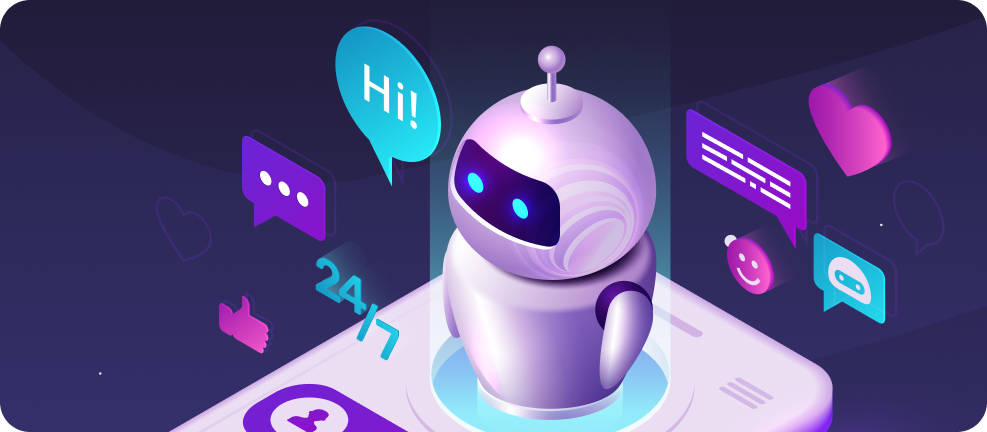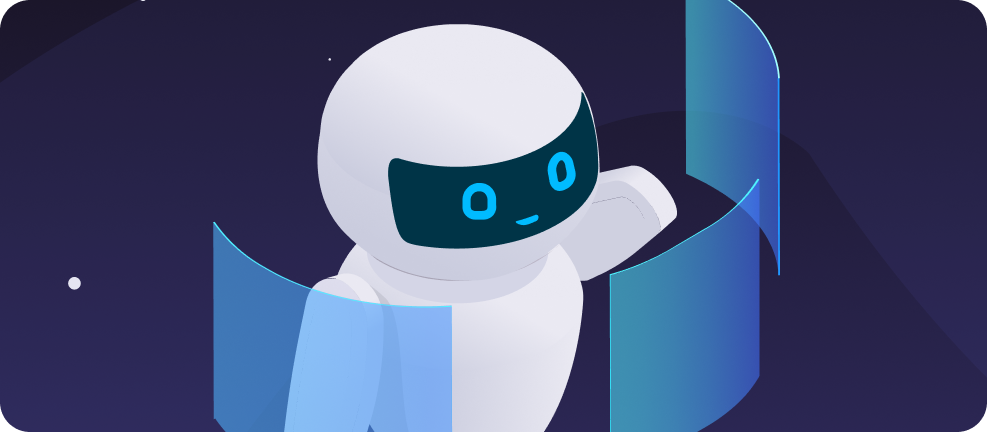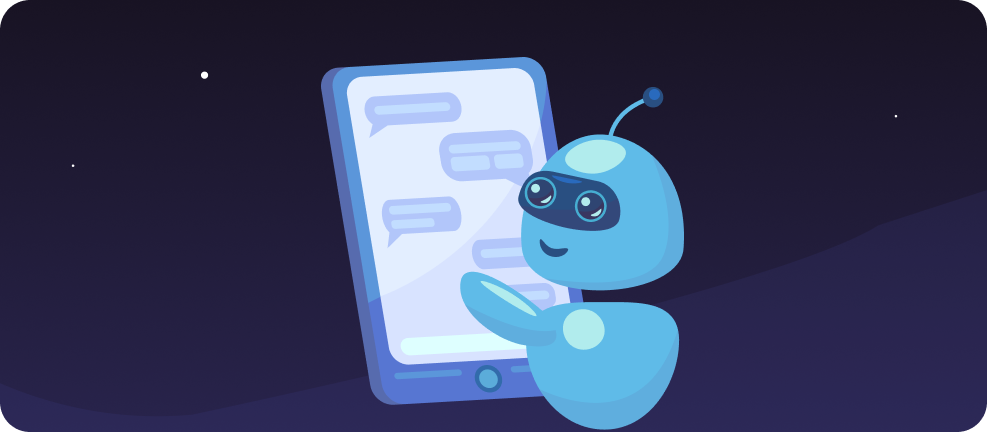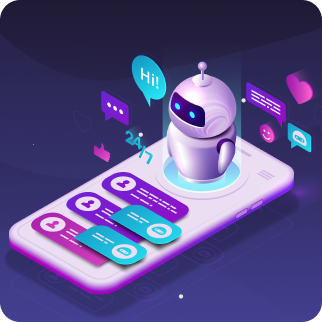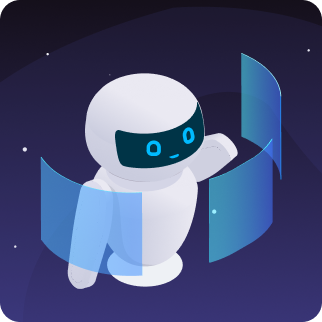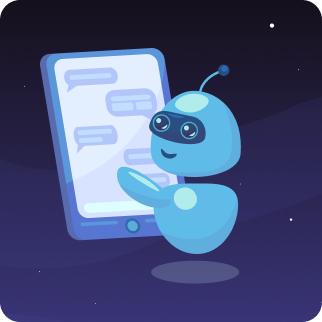Chatbot development is a complex process of creating software that can automate communication with users in messengers, on websites or in mobile applications. This is not just writing code, but designing a full-fledged virtual assistant that understands requests and solves specific tasks.
Key stages of development include:
Analysis and design: The study of your goals, the target audience and the tasks that the bot should solve. At this stage, the dialogue scenario (logic) is being worked out, platforms for hosting (Telegram, WhatsApp, website) are being determined, and a technical specification (TOR) is being drawn up.
Creating dialogues and interfaces: Developing communication scenarios, preparing response texts, and creating interactive elements (menus, buttons) to make communication user-friendly.
Programming and integration: Directly developing the application's chatbot — writing code, connecting to the messenger API, and integrating with external systems such as CRM or databases to perform complex queries (for example, checking order status).
Testing and launch: Thorough verification of all bot scenarios, troubleshooting, and launch on the selected platform.
Support and analytics: After launch, it is important to monitor the work of the bot using analytics, collect user feedback and make updates to improve its effectiveness.
Thus, the professional development and implementation of chatbots is the creation of a reliable tool that works 24/7 and helps automate routine tasks.
The choice of a chatbot platform depends on where your target audience is located and what tasks the bot should solve. Each platform has its own advantages.
Popular platforms and their features:
Telegram: One of the most popular chatbot development platforms due to its simple API, powerful features, and wide audience. Ideal for notifications, content newsletters, and support automation. Bots are created quickly and inexpensively.
WhatsApp Business API: A leader in business communications. It is suitable for serious projects where verification and security are important. It is often used for order confirmation, delivery notifications, and VIP service. Connection and usage are usually paid.
VKontakte: A great choice if your main activity is focused on this social network. The bot can work directly in the community, helping with accepting orders, conducting surveys, and informing subscribers.
Widget on the website: A chatbot embedded directly on the website helps to increase conversions by instantly answering visitors' questions and preventing them from leaving for competitors.
Tip: First, you can choose one platform (for example, Telegram) to test the hypothesis, and then scale the project to other channels.
To order the development of a chatbot from a professional studio is an investment in a high-quality and effective product. Unlike self-creation with the help of limited designers, professionals offer an integrated approach.
Advantages of working with specialists:
Deep analytics and design: Experts do not just write code, but first analyze your business processes in order to offer the optimal solution that will really work and bring benefits.
High-quality user experience (UX): Professionals will think through the logic of the dialogue so that communication with the bot is user-friendly and understandable, which directly affects the conversion.
Complex integrations and reliability: The studio will ensure stable operation of the bot under load and perform complex integrations with your systems, which template solutions cannot offer.
Technical support and development: After the launch, you receive support, prompt bug fixes and the opportunity to develop the bot, adding new functionality as the business grows.
Self-development is justified only for very simple tasks. To create a truly effective tool that will solve business problems, it is better to trust experienced developers.
The cost of developing a chatbot can vary significantly — from several thousand rubles for a simple bot to hundreds of thousands for a complex solution. The price is based on the volume and complexity of the work .
The main factors affecting the cost:
Complexity of logic and functionality: A key factor. It will cost less to develop a simple chatbot that answers frequently asked questions (FAQ). Creating a bot with integration into CRM, a payment acceptance system, or complex natural language processing (NLP) algorithms will require more resources and, consequently, will be more expensive.
Platforms for hosting: The cost depends on which messengers (Telegram, WhatsApp, Viber) or on which website the bot will work. Developing for each new platform is a separate task.
Design and interface: The presence of complex menus, product carousels, voice messages or unique visual design increases the cost.
The need for integrations: Connecting to external services (databases, 1C, delivery systems) is one of the most difficult and expensive parts of the job.
Technologies used: A solution based on a ready-made constructor will cost less, while developing a platform for creating chatbots or a custom bot from scratch in Python using machine learning will cost more.
To find out the exact price, it is best to submit a request for consultation, where experts will evaluate your project.
Modern chatbots are powerful automation tools capable of performing a wide range of tasks. The functionality depends only on your needs and the capabilities of the developers.
Typical chatbot functionality includes:
Automating the answers to questions: The bot can answer frequently asked questions (FAQ) around the clock, saving support service time.
Lead generation and qualification: The bot can collect requests from the site, ask clarifying questions and transfer warm customers to the manager, improving the sales funnel.
Order Acceptance and Booking: Integration with the product catalog allows the bot to accept orders, process payments, and even integrate with booking systems.
Newsletters: Automatic sending of news, notifications about promotions and order status to subscribers.
Conducting surveys and collecting feedback: The bot can quickly conduct marketing research or collect customer feedback.
Integration with CRM and other systems: This is a key function for the business. The bot can automatically create customer cards in CRM, check product balances, or book resources in the calendar.
Thus, with the help of chatbot development, many tasks can be solved — from unloading employees to directly increasing sales.
